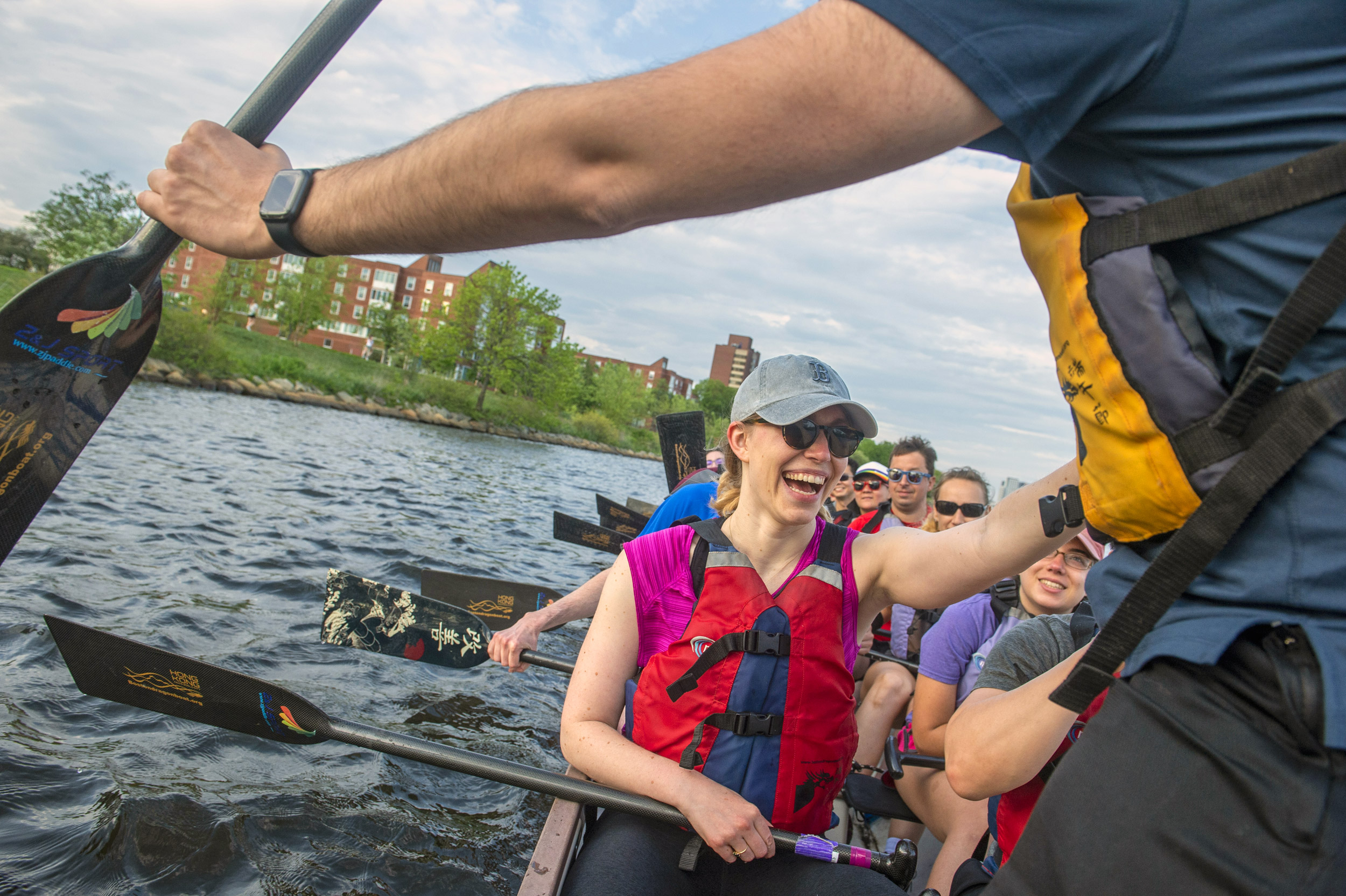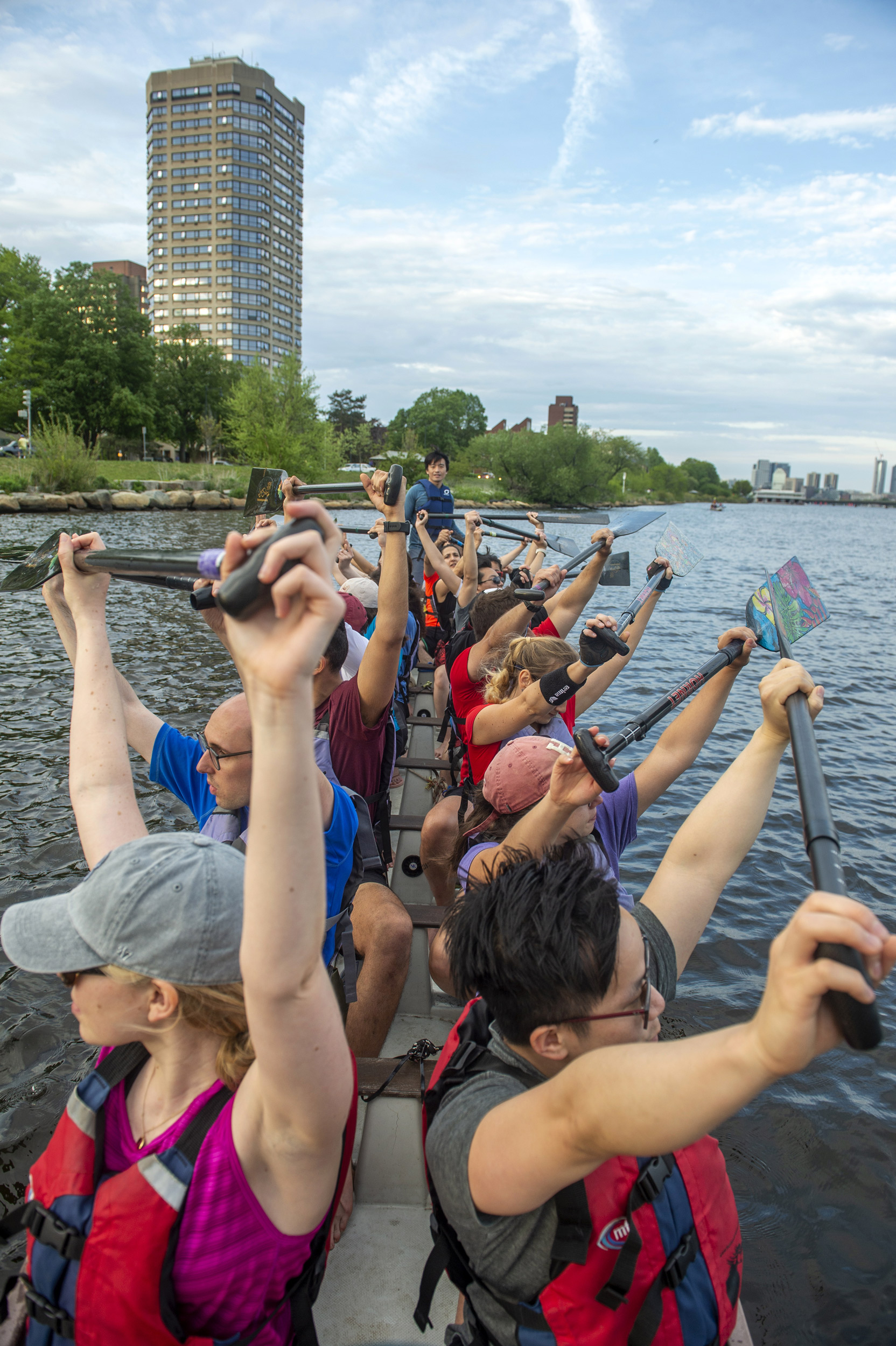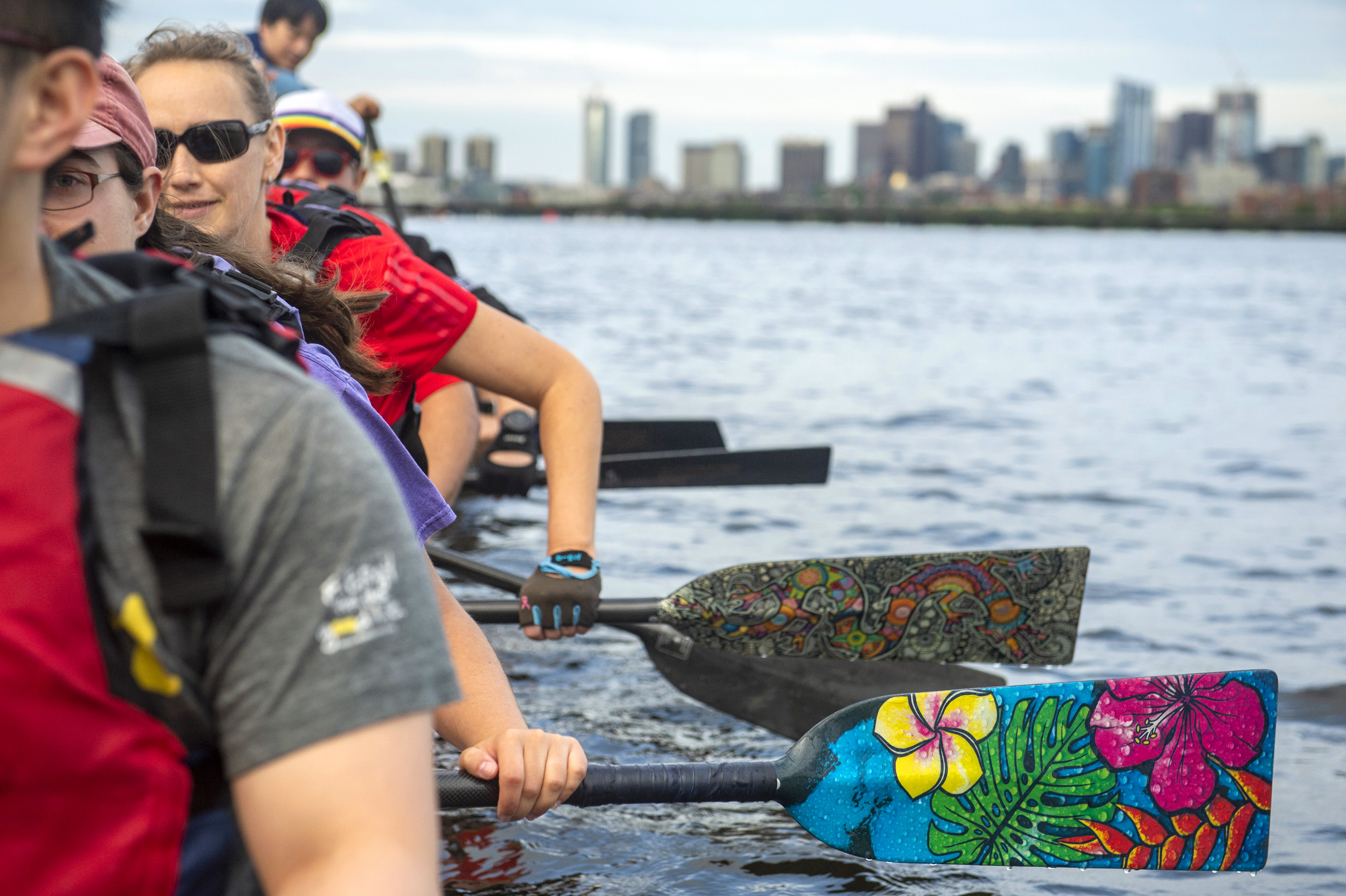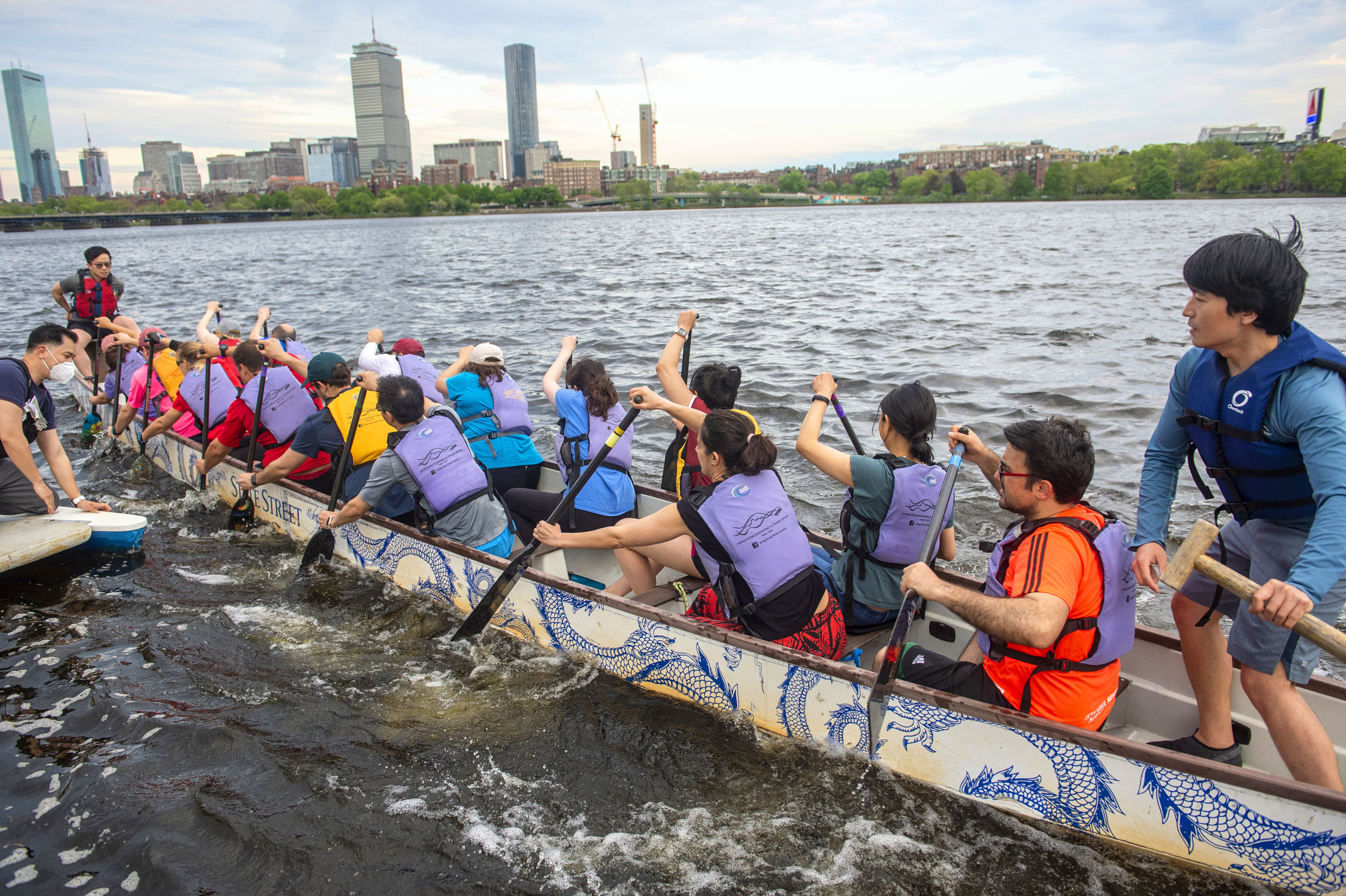How to move a dragon — fast

Benika Pinch, a Graduate School of Arts and Sciences alumna who earned a Ph.D. in chemical biology in 2020, paddles during Harvard Dragon Boat practice on the Charles River. The team practices three times a week and competes in festivals up to four times a year.
Photos by Jon Chase/Harvard Staff Photographer
Ancient Chinese sport demands teamwork, which is part of the draw, say Harvard paddlers. That, and amazing views of the city.
There’s no place for a selfish paddler in a dragon boat.
“The boat will only move forward efficiently if all 20 paddlers are synchronized,” said Tara Nicola, a Ph.D. student at the Harvard Graduate School of Education and president of the Harvard Dragon Boat racing team. “We have to do everything together if we want to accomplish anything.”
That intense bonding experience is one reason members of the Harvard community have been signing up to play the 2,000-year-old sport since the Graduate School of Arts and Sciences student organization launched in 1999.
A dragon boat is a long wooden vessel shaped like a canoe, often decorated with dragons in homage to the sport’s roots in ancient China. Paddlers sit in two lines. A caller (or drummer) commands the group. A steerer in the back directs the course.
The team returned to regular competition this year after a pandemic pause, competing last month in the Boston Dragon Boat Festival. About half of this year’s roughly 30-person squad were new to the team, and many had never paddled before.
“Through sheer hard work and determination with everybody chipping in, we got a team together and we actually performed very, very well,” said S. Dean Lee, one of two head coaches and a doctoral candidate at Harvard Medical School who joined the team in 2018.
Kassandra Diaz, a Ph.D. student from Austin, Texas, studying Japanese literature, joined just this year.
“Making so many great friends has really opened up the Harvard community and Boston area for me,” Diaz said. “When you’re on the Charles looking back at the city, it’s almost like a scene from a movie. I’m loving the city more and more as I dragon boat.”



Custom, hand-painted paddles add flair.





